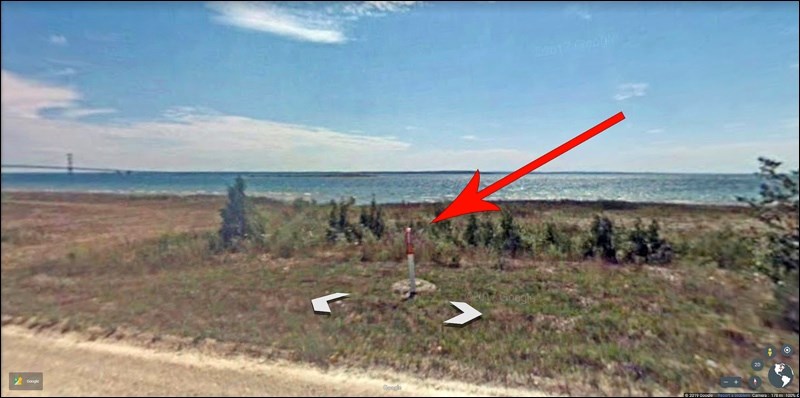In the wake of the cancellation of the Presidential Permit for the TC Energy Keystone XL pipeline project, all eyes have turned to Enbridge’s Line 5, which the Governor of Michigan has been moving to shut down.
Line 5, an existing pipeline in operation for 68 years, runs from Superior, Wisconsin, through the upper peninsula of Michigan, across the Straits of Mackinac (which joins Lake Superior and Lake Huron) to the lower peninsula. In addition to supplying Michigan and Ohio refineries with oil and natural gas liquids, the line crosses to Ontario at Sarnia and supplies southern Ontario and Quebec. That oil comes from Western Canadian oil, including oil from Saskatchewan. Michigan Governor Gretchen Whitmer wants it shut down, citing a risk it could leak and irreparably damage the Great Lakes.
Alberta Premier Jason Kenney has expressed concerns that President Joe Biden’s cancellation of the approved presidential permit for Keystone XL could lead to retroactive action on other, existing pipelines, including Line 5.
Saskatchewan Energy and Resources Minister Bronwyn Eyre said by email on Feb. 2, “Enbridge Line 5, which Governor Gretchen Whitmer of Michigan has ordered shut down by May, is critical energy infrastructure that connects Saskatchewan and Alberta producers to vital markets in Ontario, Quebec and the United States and supports tens of thousands of jobs. Line 5 supports about half the oil needs of Ontario and Quebec and ships oil refined in Sarnia into gasoline, diesel, home heating fuel, aviation fuel, and propane. The line has operated safely and reliably for more than 65 years. Michigan and Saskatchewan have a trading relationship, valued at over $200 million USD, in imports and exports combined. Why willfully jeopardize that? Enbridge Line 5 must remain operational.”
Enbridge had proposed digging a tunnel under the Straits of Mackinac, and installing a new pipeline in that tunnel to replace the two lake-bottom pipelines currently in place.
On Jan 29, the Michigan Department of Environment, Great Lakes, and Energy (EGLE) announced that it has approved Enbridge Energy’s application for certain permits required to build a utility tunnel under the Straits of Mackinac.
“If constructed, the tunnel would house a proposed replacement for the 68-year-old Line 5 dual petroleum products pipelines currently lying on lakebed. EGLE’s review of the permit applications concluded that the proposed construction of a tunnel beneath the lakebed can be done in compliance with the state environmental laws that EGLE administers,” the EGLE release said.
“EGLE acknowledged public concerns about the existing oil pipeline and affirmed the Michigan Department of Natural Resources’ conclusion that the current pipeline violates the Public Trust Doctrine and poses an unacceptable risk to the Great Lakes,” it added.
The permit approvals follow a nine-month review period and cover Enbridge’s National Pollutant Discharge Elimination System Wastewater Permit (NPDES), bottomlands, and wetlands permit applications. EGLE’s permit review confirmed that the proposed tunneling project would have minimal impact on water quality in the Great Lakes and would not affect protected public uses of Michigan’s water resources.
“EGLE is obligated to review permit applications with the goal of protecting the environment and public health, but within the confines of Michigan law,” said Teresa Seidel, director of EGLE’s Water Resources Division. “During our review of this proposed project, our top priority has been protecting the Straits of Mackinac and the surrounding wetlands, aquatic life, and other natural and cultural resources from adverse environmental impacts.”
EGLE’s review determined that the proposed project would result in minimal impact to wetlands, estimating wetlands affected to be 0.13 acres – an area roughly one-tenth the size of a football field. Enbridge will be required to protect 1.3 acres of existing Great Lakes coastal wetlands and purchase wetlands credits from a state wetlands mitigation bank to address this impact.
In response to the approval, Enbridge issued a release on Jan. 29. "These approvals bring us a step closer to building the Great Lakes Tunnel," said Vern Yu, Enbridge executive vice president and president, Liquid Pipelines. "Line 5, encased in a tunnel below the lakebed, is the best way to safeguard the precious waters of the Great Lakes and ensures that low cost, safe and reliable energy keeps flowing to Michigan, neighboring states and Canada's two largest provinces."
The Enbridge release noted, “The permits issued today do not resolve Governor Whitmer's effort to shut down Line 5's current operations. Enbridge is challenging those efforts in federal court. Such a shutdown before the completion of the Great Lakes Tunnel Project would lead to major energy shortages in the region and severe economic consequences for Michigan, neighboring states and Canada.
Enbridge added, “The EGLE permits are an important milestone for the tunnel project and are part of the process to authorize its construction. Permits from the Michigan Public Service Commission and the U.S. Army Corp of Engineers are still required. The environmental permits issued today are related to various parts of the Natural Resources and Environmental Protection Act, the Clean Water Act and the National Pollutant Discharge Elimination System.
“The Great Lakes Tunnel will encase a replacement section of Line 5 well below the lakebed, eliminating the risk of an anchor strike and virtually eliminating the potential of any release from Line 5 into the Straits. Survey research has shown that a majority of Michigan residents favor construction of the Great Lakes Tunnel, which is why Enbridge is investing approximately $500 million to construct the tunnel.”
Prior to making its permitting decision, EGLE said it held four public information sessions, four public hearings and four tribal consultations. EGLE’s decision making also included input from the State Historic Preservation Office and a report from an independent civil engineering firm specializing in complex tunneling projects. EGLE also reviewed more than 2,600 comments from the public on the permit applications and devoted more than 2,000 staff-hours to its consideration, EGLE said.




